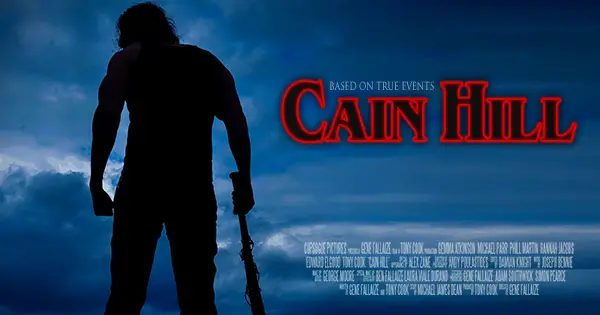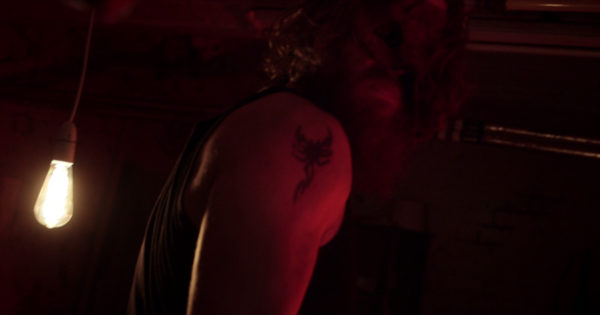Director’s Perspective: Post-Production

I am a motion picture & television Director & Producer,…
Hi, my name is Gene Fallaize, I am a director and producer and I will be writing a regular article about my activities and perspectives as a working professional in the entertainment industry. This week, I’d like to talk a little about post-production, and give a bit of an insight as to what goes on after the cameras stop rolling.
To give a little perspective, I directed an indie horror feature film in the U.K. in September 2016 starring Gemma Atkinson called Cain Hill. Six months on, and we are just about to clear the final cut, and prepare the film for its premiere and distribution.
Back To The Day We Wrapped
Now, let me rewind to the day we wrapped. The last scenes of the film we shot were practical plate FX shots of a burning human head, which went to plan, and the crew were great working with a one-shot multi-camera fire effect. We got de-rigged in record time, and everyone made it to the wrap party, which ended up in a tight game of pool with some very high bets – I put up my house, someone else put up their car …seriously!

Anyway, the next morning is when the production clock ticked over from ‘in-production’ to ‘post-production’, and the footage from the camera and sound files were all rushed to our assistant editor. While many of the cast were still nursing hangovers, the edit was already underway. The assistant editor Niall Todd worked quickly to ensure the sound and video files were all reconnected and re-synced. We encountered a hiccup that cost us a few days due a delay in all the sound arriving, but that’s what happens with tight timeframes sometimes. We got through it, and Niall finished the footage and sent it all to the main editor, Damian Knight.
Post-Production Madness
The first major stage the main editor gets to is the Assembly Edit, which is usually rather clumpy. Rough edges, awkward timing, and shots in the wrong order are all common in the assembly edits, but it’s an exciting time for me as director as it’s the first time I start to see scenes – and the picture as a whole – start to come together. I as director then make basic notes of the biggest issues to try and work with the editor to start to refine the cut.
Once the assembly is complete, the next stage is the first ‘fine cut’, which, as one would expect, is the first in a series of revisions that get finer – and hopefully better – with each revision. Issues can be massive, to changing scenes or shots, or tiny, to trimming fractions of a second off a certain shot before a cut.

During the fine cuts that I was working on with Damian, Niall had stayed on to put together the closing titles of the film, which while they may usually seem simple, I had a specific vision for those in Cain Hill, and it took a few weeks of daily updates to refine it and get the titles right.
Reshoots
At the same time Damian and I had finished refining up to ‘Fine Cut E’ – i.e. after five fine revision rounds to the edit. It was when we got to this fine cut that we realised that we had an issue with one of the storylines, and we needed to shoot some reshoots. Reshoots are common on almost all motion pictures, from small indies up to the biggest studio movies, so it was very much the norm for us to shoot some new footage to slip into the edit – in this case, mainly a new short scene to make an existing storyline more cohesive and understandable for audiences.
Once the reshoots were compete, the footage again went to Niall for processing, then across to Damian to cut in as before. This is when it got busy! Niall also finished up the end titles, and he was clear of the picture, just as the sound for the film started to pick up. Damian completed Fine Cut F, which was ‘picture locked’ with the new scene, and no further changes could be made to the timing of the film or any scenes, and the sound designer Dean Konidaris and the composer Joseph Bennie got to work to create the soundscape for the film.

Color & Sound
Warren Williams came on board at this point as our colourist to ‘grade’ the film, which basically means levelling and matching the colours of different shots and angles, and then adjusting the tone and temperature of the footage to match the directors vision. The grade in Cain Hill involves a lot of green tones and hues, especially in the second half of the film, to give a grimy uncomfortable feel, replacing the yellow and brown look the location actually afforded.
With the grade complete, next came sound, which included dialogue processing, soundscape/ambience, and sound effects, which were then all sent complete in their respective ‘stems’ to Joseph the composer who was also doing the final sound mix in glorious Dolby Digital surround. Joseph then sent the completed sound to Damian for him to edit to the graded picture from Warren, to produce the final cut of the film.
Final Cut
And this is where we are now, with the final cut complete, three weeks away from the premiere in London’s Leicester Square on April 21. We have some tests to do, and some screeners to have made up, as myself and Tony Cook – Cain Hill‘s producer – fly out to LA the next day to meet with distributors and sales agents who are interested in buying and distributing the film.
If you have any questions about the post-production process, please don’t hesitate to ask in the comments below!
In my next article I’ll pickup from here and discuss the Premiere, and how it went in LA, but for the time being, have a great April!
Gene
Does content like this matter to you?
Become a Member and support film journalism. Unlock access to all of Film Inquiry`s great articles. Join a community of like-minded readers who are passionate about cinema - get access to our private members Network, give back to independent filmmakers, and more.
I am a motion picture & television Director & Producer, and owner of production company Cupsogue Pictures.













